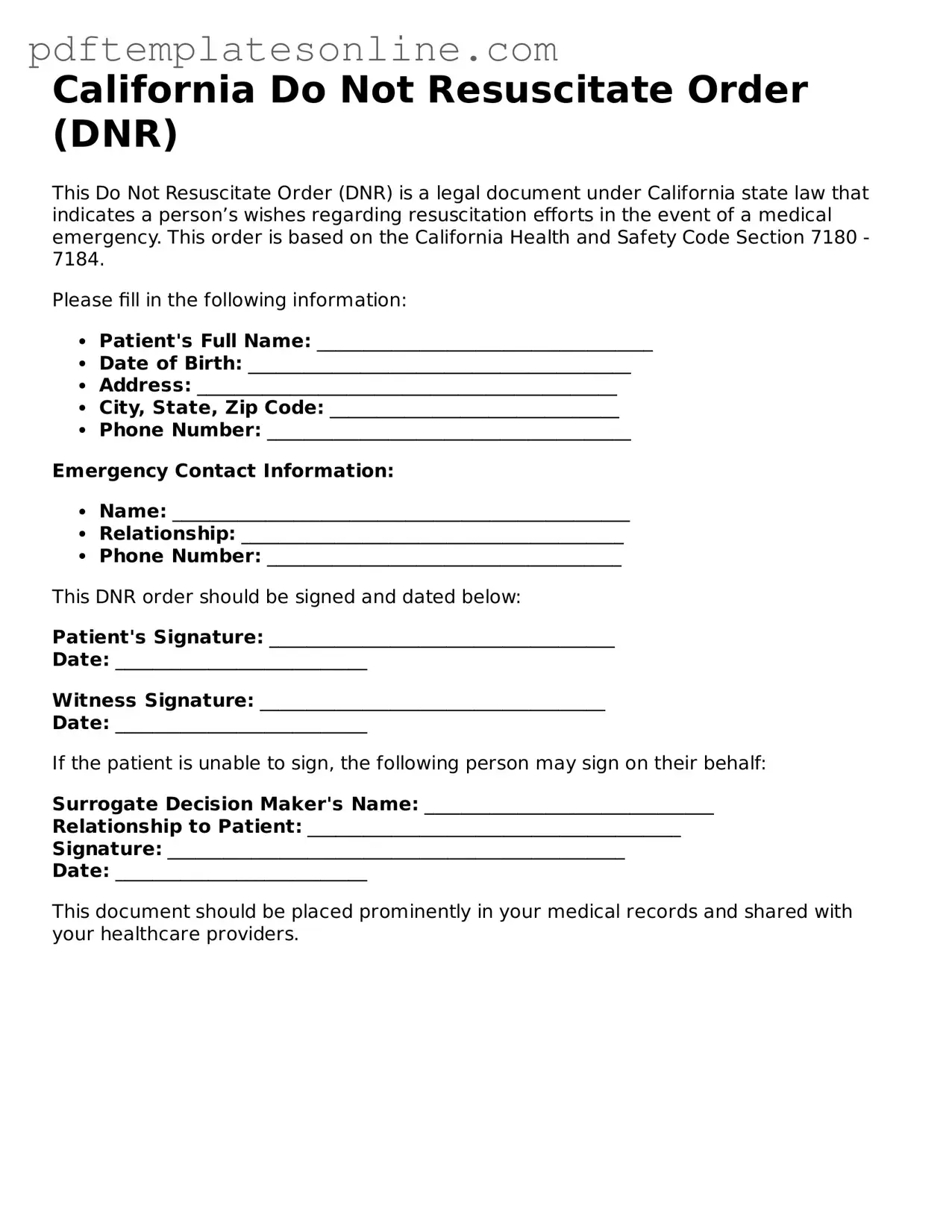Filling out the California Do Not Resuscitate (DNR) Order form is a critical step in ensuring that your healthcare wishes are respected. However, many individuals make mistakes that can lead to confusion or unintended consequences. Understanding these common errors can help you avoid them and ensure your wishes are clear.
One frequent mistake is not having the form signed by a witness. The California DNR form requires a signature from either a witness or a notary public. Without this, the document may not be considered valid, potentially leading to unwanted resuscitation efforts.
Another common error is neglecting to complete all required sections of the form. Omitting information such as the patient’s name, date of birth, or medical record number can render the form incomplete. This lack of detail can create complications for healthcare providers during critical moments.
Many people also fail to discuss their DNR wishes with family members or healthcare proxies. This oversight can lead to confusion or conflict among loved ones when decisions need to be made. Clear communication ensures that everyone understands your wishes and can advocate on your behalf.
Some individuals mistakenly believe that the DNR form is a one-time document that does not need to be updated. In reality, circumstances can change. It is essential to review and, if necessary, revise your DNR order regularly, especially after significant health changes.
Another mistake involves using outdated forms. California law can change, and using an old version of the DNR form may not comply with current regulations. Always ensure you are using the most recent version available to avoid any legal issues.
Additionally, people sometimes fill out the form in a way that is ambiguous or unclear. Using vague language can lead to misinterpretation of your wishes. It is crucial to be as specific as possible to ensure that your intentions are understood.
Finally, failing to provide copies of the completed DNR form to healthcare providers and family members can create unnecessary challenges. Distributing copies ensures that everyone involved in your care is aware of your wishes and can act accordingly in a medical emergency.
